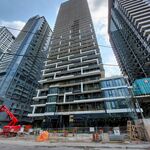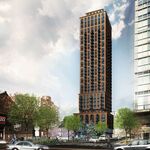I have mentioned it here before, but has the issue of land use really been brought up in the political debate about this proposal. Supporting infill as opposed to greenfield development is great but I think the numbers involved really need to be brought up.
I've included the quote below by innsertnamehere because I share in their thought that the way the current land use system is setup will create problems. There are a large number of people and jobs coming to the remaining lands in Brampton that this highway will cut through or be near to. Most of these lands are already in very advanced planning stages.
I am sure others can bring up better reports than the two I will link here, but for the sake of the discussion I think it is important to understand what the plan for growth in this area looks like. If we look at these documents in conjunction with the latest Growth Plan numbers. Peel is expected to reach a residential population of 2,280,000 by 2051, so approximately an additional 900,000 more than today. If all that growth gets pulled out of the designated agricultural lands, how big of an area and what levels of density are needed to accommodate that? If we are going to go that route then lets get started on a plan to combat NIMBYism in low density neighbourhoods, because I have a feeling without including them those type of numbers only achievable if every retail plaza in Peel gets turned into 80+ storey towers.
Aside from that, the intensification analysis also has some interesting points about feasibility for different households. Page 14 of the PDF notes that the household characteristics of Brampton show that 48.5% of homes have 4 or more people living in them. It even makes the point that this potentially represents a constraint for achieving the current planned housing mix because of the difficulty accommodating large households in apartments. That opens a whole other can of worms with regards to affordable square footage and maintenance fees in condos.
Regardless of my ranting above, I get the opposition to the highway. I grew up in the rural areas this proposal is slated to go. I appreciate and have enjoyed the natural environment that would be impacted and support its environmental conservation. I have already watched so much of it get eaten up by sprawl. But I also understand the immigration numbers Canada is chasing and that the population projections we are pushing for are what is driving all this. I don't have the solution, but I think opposing this highway needs to account for these factors in a more clear manner so I can understand what the path forward looks like without it. The path with the highway looks gloomy, but the cynic in me worries that if we oppose it, we will just end up with the same endless sprawl only with the addition of even worse traffic.
Region of Peel - Growth Management Fact Sheet
PEEL 2041 MCR Draft – INTENSIFICATION ANALYSIS Strategic Market Demand Assessment




